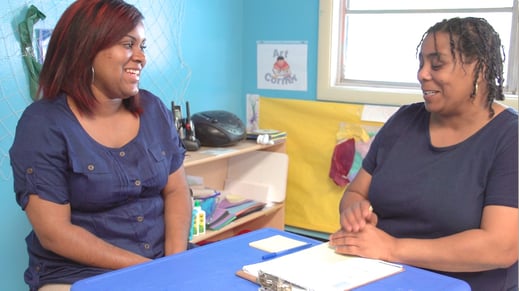
In our recent webinar, Making the Move to CLASS® 2nd Edition, we shared how programs and individuals can begin to experience and use the enhanced Pre-K–3rd CLASS® tool. And, in this recent blog post we took a closer look at what these enhancements mean for certified observers.
To engage in continuous quality improvement, effective coaching is key. With effective coaching structures and programs in place, organizations can drive quality improvements that support children's development and learning. And, with CLASS® and CLASS coaching certifications, organizations can focus their improvements on research-proven educator-child interactions.
During the development of CLASS 2nd Edition, we wanted to build on this strong coaching foundation, but make it easier than ever for coaches to be more effective in driving improvements.
CLASS 2nd Edition helps coaches:
Support educators across unique contexts
CLASS 2nd Edition incorporates intentional feedback collected over the last 15 years from the field, and from subject matter experts to ensure that the tool more accurately represents the diverse and unique settings of today’s educators.
The definitions of meaningful interactions were carefully reviewed and updated to ensure they are more inclusive and more representative of cultural, language, and setting variations. And, additional guidance and support is provided to ensure educators, coaches, and observers have a stronger understanding of how interactions look and sound across various contexts, such as in classrooms with dual language learners or children with disabilities.
Deliver more individualized coaching
Coaching practices can be made more impactful when improvement plans are data-driven. With CLASS 2nd Edition, observers will collect additional data points that will provide coaches with a more holistic picture of quality, and the factors that can either support or detract from meaningful interactions taking place.
The formalization of assigning a score range at the indicator level will give coaches more insights into the specific behaviors and skills that can drive meaningful interactions. And, the addition of “Activity Settings” and the optional CLASS Environment™ offers data-points around the type of content exposure and elements of the environment that impact the interactions. Together, these three specific enhancements offer a more comprehensive picture of the classroom quality, and can help coaches more effectively create an individualized coaching plan to holistically address areas within a teacher’s direct practice that can be supported to better drive children’s development and learning.
And, if programs are utilizing the myTeachstone Observation Data Collection tool, the updated tool will provide reports that generate automated feedback that identifies strengths and opportunities based on indicator data, making a coach’s job even easier!
Provide more clarity on effective interactions
CLASS has long been used to define and create a shared understanding of educator-child interactions. CLASS 2nd Edition incorporates intentional edits to the language used within the tool to provide even more clarity, reduce any confusion, and eliminate any potential for harmful misinterpretation. These updates help make CLASS, and quality interactions, easier to understand and thus easier to implement into daily practice.For example, the Pre-K/K-3 indicator of “Positive Affect” is updated to “Enjoyment” in the CLASS 2nd Edition Pre-K–3rd tool. This change does not impact what is being observed, but rather provides more clarity around what exactly the observer is looking for within the classroom and across interactions.
Another example, is the indicator of “Open-Ended Questions” is updated to “Open-Ended Prompts”. This provides more clarity that there are various ways to support language development and modeling within the classroom, which encompasses open-ended questions, but can also encompass prompts like, “Tell me more.”
Evolving to CLASS 2nd Edition
CLASS 2nd Edition is an evolution—an evolution of the tools, and an evolutionary process to having each program adopt the updated tools. As with any evolution, this process is gradual and will occur over time.
Starting this July, CLASS 2nd Edition will become available through:
- Digital (read-only) access to the CLASS 2nd Edition Pre-k–3rd Reference Manual
- A print CLASS 2nd Edition Pre-K–3rd Manual Set available for purchase
Once the CLASS 2nd Edition Pre-k–3rd Manual Set is available, coaches can begin using and/or incorporating the enhancements from the 2nd Edition into their coaching practices. If you are a certified observer, click here to learn more about the recertification processes and supports available. Pre-order the Manual Set today!
Same Focus, Greater Impact
The 2nd Edition of CLASS is bringing forward enhancements that make the tool more equitable to use, easier to access, and more impactful. It is not changing the foundation of CLASS, nor is it changing the definition of meaningful interactions.
The intentionality behind the enhancements ensure that coaches can maintain, and continue their daily practices and keep the same focus, but hopefully with greater impact through the CLASS 2nd Edition tools.
Additional Support
Looking for even more information and guidance around CLASS 2nd Edition? We’re here to help!
- Visit the CLASS 2nd Edition Webpage
- Review what CLASS 2nd Edition means for teachers, administrators, observers, and affiliates
- Join our upcoming webinar about CLASS Environment
- Explore the full CLASS 2nd Edition FAQ

